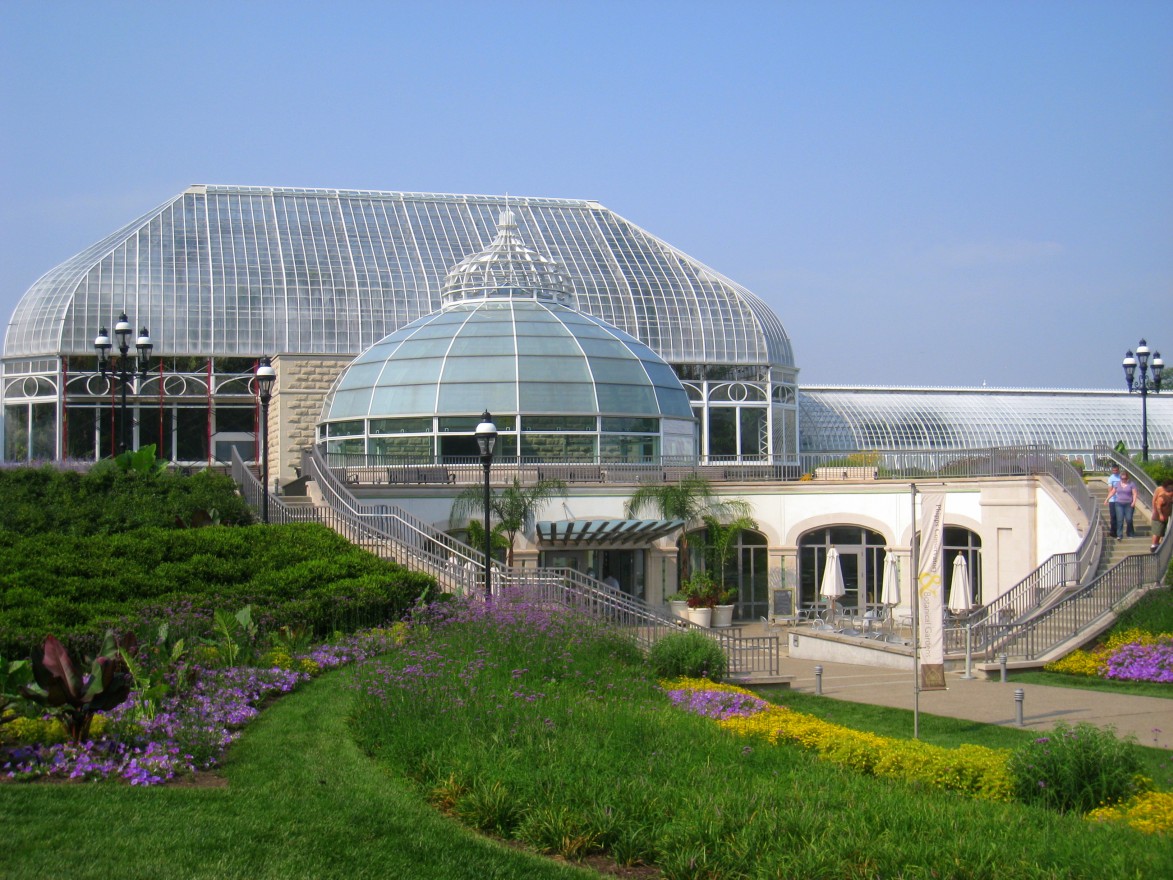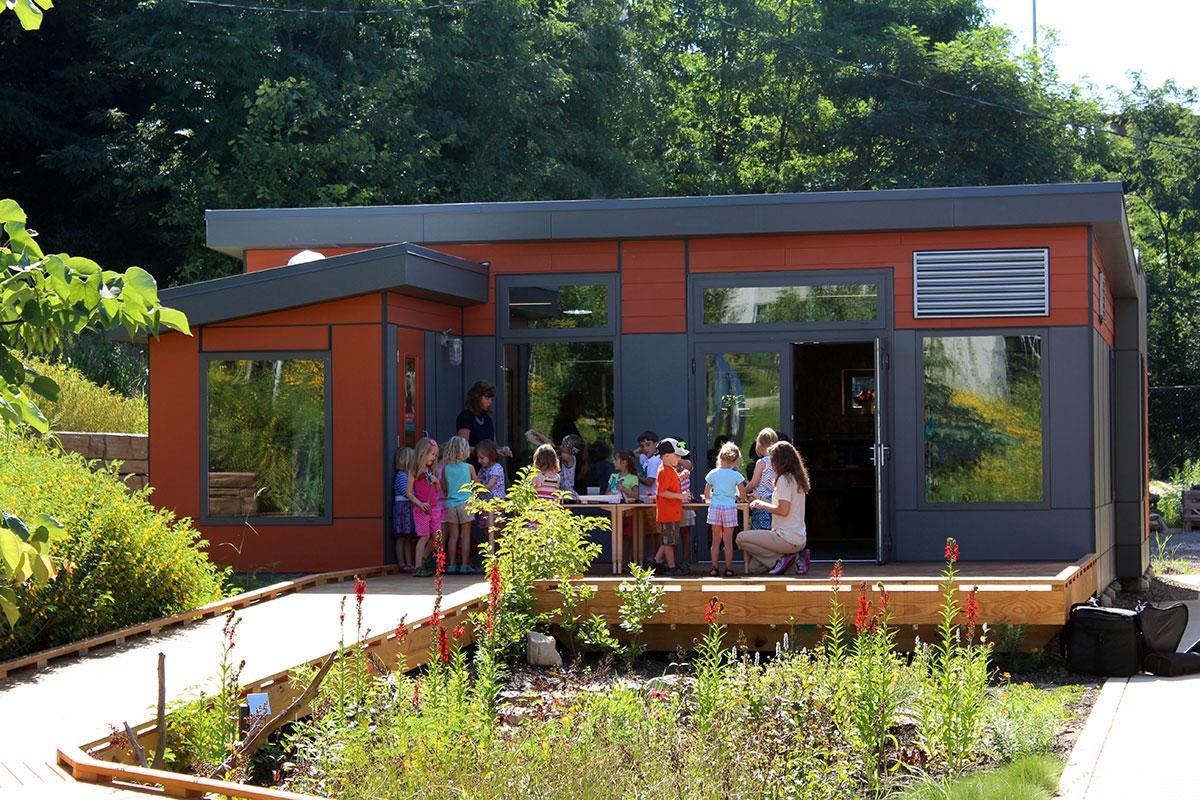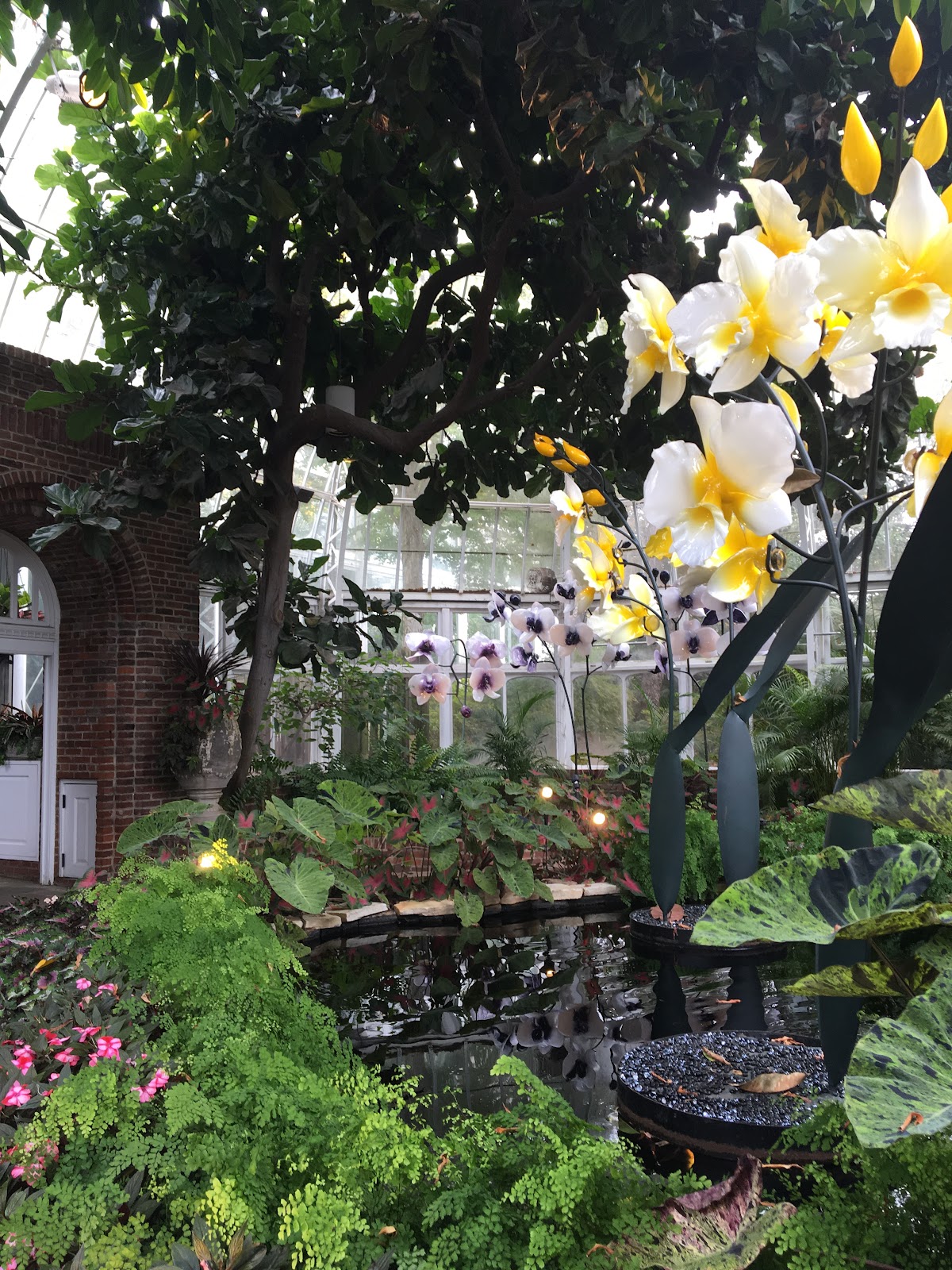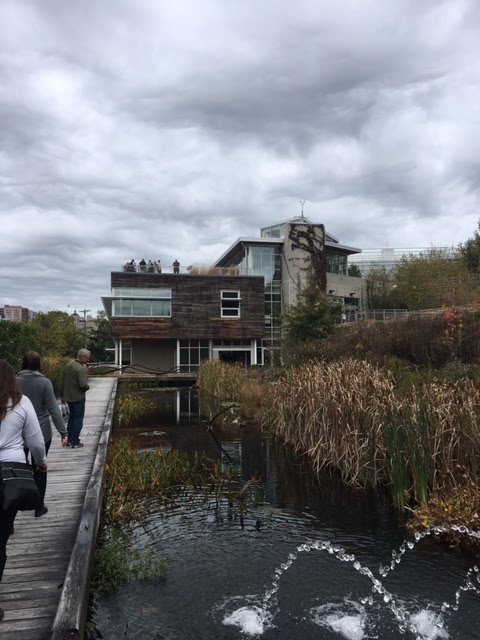
The Phipps Conservatory and Botanical Gardens is in Pittsburgh’s Oakland neighborhood. (Wikimedia Commons)

The Phipps Conservatory and Botanical Gardens is in Pittsburgh’s Oakland neighborhood. (Wikimedia Commons)
Of all the places on the planet you’d expect to find the greenest building, Pittsburgh is probably not on the top of the list. Shanghai or Seattle, sure, but the Steel City?
Believe it or not, Phipps Conservatory and Botanical Gardens in Pittsburgh’s Oakland neighborhood is one of the many buildings vying for the “greenest” title. Rising from the crest of a hill, the eye-catching conservatory is a beacon of sustainability in a city better known for its industrial past than its environmental forward-thinking.
Referring to Phipps as a building is a bit of a misnomer, as the campus includes a tropical forest conservatory, a production greenhouse, a welcome center and cafe, a research building, and a modular learning facility called the SEED classroom.
Now in its 125th year, Phipps began to show clear commitment to a sustainable future in the last decade. It reduced carbon dioxide emissions by 56 percent per square foot over the course of a decade, exceeding the 2025 goals set by the Paris Agreement. The campus is powered 100 percent by on-site solar and wind or through the purchase of renewable energy credits. A majority of the sanitary water from the buildings is cleaned by constructed wetlands on the campus.
Most of the LEED-silver certified welcome center is underground, as it is earth-bermed on three sides. Its parking lot is on the grassy lawn — no asphalt required. The center’s cafe, which is 3 Star Certified Green Restaurant, composts 500,000 pounds of waste per year and sources organic and local foods whenever possible.
The SEED classroom, which is used primarily for children’s education and activity programs, is net-zero energy and is Petal Certified by the Living Building Challenge. It is a stand-alone building made primarily of lightweight, recycled materials and is intended to be a superior alternative to overflow trailers used by some schools. All of its mechanical systems are exposed so that students can learn through interaction.

Even the botanical gardens themselves are full of surprises. Mixed in with the living flowers are vibrant glass flowers that are instantly recognizable as the work of renowned artist Dale Chihuly.

There is only one greenhouse in the world to be LEED-certified, and, not surprisingly, it’s at Phipps. It has an open roof system and features 16 different growing climates thanks to highly sophisticated computer controls.
The tropical forest conservatory is the first conservatory in the world to be powered by a fuel cell. It is completely passively cooled by underground tubes in the earth that bring cool air up into the building.
The real highlight, though, is the Center for Sustainable Landscapes, a 24,350-square foot education and research facility located behind the main conservatory building. It’s the only building in the world to have been awarded the four highest green building certifications: it was the first to get a Four Star Sustainable SITES certification; has the highest number of points for LEED Platinum v2.2; was the first WELL Platinum building; and, most impressively, has Certified Living status under the Living Building Challenge. It is one of only 15 buildings in the world to be Certified Living.

The Center for Sustainable Landscapes has so many “green” qualifications that it becomes almost impossible to appreciate how remarkable each one is. Not only does it power itself through solar and wind power, it produces enough electricity annually to power 12 homes. It uses 75-percent less energy and 90-percent less potable water than a typical office building, and it manages 3.25 million gallons of stormwater per year. The atrium and green roof feature over 100 native plant species and offer a stunning view of downtown Pittsburgh.
That Phipps is achieving all of this in Pittsburgh may be part of the awe value. In many minds, the city is known for steel manufacturing and pollution, not net-zero buildings and exotic plants. But Pittsburgh is experiencing a renaissance of sorts, having cycled through the boom and bust of industrial America’s past. It’s a city on the rise, aided by sustainable titans like Phipps.
This is not the new Google campus or a shiny tower in a destination city. Though its glass exterior gives the conservatory a futuristic appearance, Phipps was founded in 1893 by steel magnate Henry Phipps, at the height of the city’s significance as an industrial center. It was even a stop on the tour of exotic plants from the 1893 Chicago World’s Fair. The welcome center, built in 2005, speaks to the conservatory’s gilded age roots with a gorgeous neo-Victorian dome made of glass.
Perhaps what is most impressive about Phipps is not just its certifications or marvels of sustainability, but its roots in the community. The conservatory offers free children’s wellness events and resources, and its education programs are attended by 5,000 adults and 40,000 family groups annually. The Homegrown program installed over 200 vegetable gardens in underserved neighborhoods in an effort to increase access to healthy, fresh food. Phipps collaborates with local universities to research sustainability, botany, and environmental health issues, and it offers paid internships to high school students from low-income households.
One of the greenest buildings in the world is one you may not know about. But the people of Pittsburgh know about it. It may be their best kept secret.